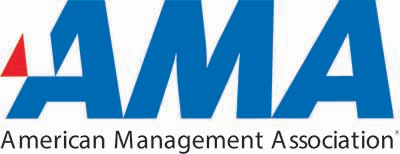ATD Blog
The Missing Ingredient in Your Learning Strategy
Tue May 04 2021

There are seismic shifts occurring with the way we work. We have experimented with remote work and dispersed teams. How you connect with employees—how you inspire them to peak performance, communicate change, and align them toward common goals—has changed. Is it any wonder that learning strategies and how you deploy them also need to change?
“How do you compete for employees’ attention when they are surrounded by distractions? How do you rise above the noise and demonstrate urgency and leadership commitment?” asks Jeff Becker, director of government learning solutions at American Management Association (AMA). “These are pressing issues for our clients who want to ensure their initiatives are successful with a distributed workforce.”
“There can be a lot of pressure for learning professionals to start executing a strategy,” says KC Blonski, vice president, government and corporate learning solutions at AMA. “But your first steps in defining a solution are crucial. How will you really get leadership commitment and ongoing support if the program doesn’t address the underlying business issue and feed into the overall business strategy?”
“We’ve found it’s best to start with the why and make sure we’re partnering to develop the best solution for our clients,” he continues. “Sometimes there’s a mix of competencies needed, and sometimes those competencies need to be tailored and very clearly defined within an agency’s mission. Our solutions always begin with an assessment between current capabilities and desired future state before we lay out a strategy and implementation plan.”
“Regardless of the solution,” says Blonski, “demonstrating leadership commitment is crucial.”
“Performance improves only when the right behaviors are targeted,” agrees Becker, “and meaningful behavioral change occurs only when employees develop the right competencies and the motivation to master them.” Real leadership commitment, he adds, is often the missing ingredient in a leadership strategy that drives motivation.
“Leaders need to do more than simply kick off the initiative,” says Becker. “When it is valuable and not inhibiting open communication, leaders should actively participate.” It shows their commitment to the initiative and their commitment to self-development, including their own.
Leaders need to participate in follow-up conversations with participants and their managers. Most importantly, leaders need to ask questions and listen to the feedback because that will often point out what should happen next. This conveys real commitment and will further increase the potential for success.
Aligning employees when you’re dispersed takes more planning and a more active role on the part of leaders and managers. Managers have learned that to effectively lead remote teams, they need to communicate clearly and more often. To set the stage for a successful learning experience, managers must start early and be transparent about why the team member is going to participate in the training and how it relates to their specific work. Adults learn best “in context,” so managers need to be able to clearly articulate the connection to the work.
How can you do that?
“Anchor it to something,” says Becker. “Performance management, development plans, competencies . . . these all help give your initiative structure and help employees ensure their daily behaviors are supporting it.” Coaching conversations and performance goals help link the learning to the employee. This ongoing support from leaders and managers helps motivate real change across an organization.
In the end, the real measure of success for learning initiatives is in meaningful behavioral change, which can only happen through proper assessment and design.
Ask about AMA’s implementation matrix.
Want to learn more? Join AMA Government Solutions May 25-27, 2021, at the ATD Government Workforce virtual conference.

